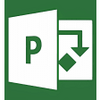Professional management tool that gives you the ability to collaborate with a large team
Professional management tool that gives you the ability to collaborate with a large team
Vote: (20 votes)
Program license: Trial version
Developer: Microsoft
Version: 2016
Works under: Windows
Vote:
Program license
(20 votes)
Trial version
Developer
Version
Microsoft
2016
Works under:
Windows
Pros
- Spreadsheet layout organizes project timelines and schedules
- The software visually depicts the ins-and-outs of complex scheduling activities
- Provides a solid collaborative framework
- Manages all project assets
- Creates graphics for timelines and schedules
Cons
- There's a steep learning curve to conquer
- Doesn't integrate well with Non-Microsoft programs
As the software's box label implies, Microsoft Project Professional 2016 is used by business professionals to digitally manage their projects. For those employees who don't work in a high-pressure corporate environment, that description doesn't have much real information to offer. Put it this way, the suite of business management tools allows office manager types to organize and coordinate any conceivable company project category. From a purely office-based business model to one that incorporates a production factory of some kind, the software takes the pain out of excessively complicated business ventures.
Using this resource centralizing business tool, executives coalesce all project holdings into one easy to navigate layout. If there are only one or two managers in a company, a messy group of principal project blocks resolves into a systematically organized series of easy to implement tasks. It's so much easier to visualize a plan or schedule when employee responsibilities are digitally arranged in this way. But Microsoft Project Professional 2016 has a lot more to offer. Adding communicative power to the software, its collaborative features open up a whole world of resource coordinating possibilities. From across the world, other members of a team can input their share of the work. Indeed, when leveraging the communications power of MS Project Pro 2016, an interdepartmental office partnership is as easy to handle as a meeting that summons team members from a half dozen far-apart nations.
So, what are these corporate managers doing when they start a session in this software workspace? They're comparing and adjusting project timelines, setting up schedules, allocating budgets, and allotting team members. And that's only the beginning. After planning out a crude schedule, there's the plan polishing and nuanced asset management work to conduct. Chats and virtual meetings are held in a program window, then decisions are made and communicated to all members of the project team. Above all else, that communications pipeline is maintained. As the meetings conclude, minutes are then taken and plan annotations are recorded, again, wholly within the interface of this project management suite. In the final analysis, all of these resources, all of these team members and company assets, they equal a great deal of corporate expenditure. If that investment isn't to be wasted, every decision taken by every project member must be digitally accounted for and logged. After all, complex corporate plans are comprised of many moving parts. They're rarely static, so dynamic project parts need constant monitoring, plus heaps of collaborative input.
Ultimately, the software described here is intended to anchor all of those moving parts, to pull the data into a Windows computer workspace and render all of the project blocks in living color. Once able to visualize the plan, the various executive members and lower-echelon team participants can fine-tune their collaborative efforts and save money. Complex schedules break down into easy-to-follow timetables when this approach is adopted. It's the same with timeline management and the implementation of a goal-oriented schedule. By breaking all such knotty, hard to enforce project streams down into smaller chunks, they become easier to manage and administer. Then the reports flow out automatically from a pre-configured Microsoft Project Professional 2016 panel, with only department-relevant data recorded on the spreadsheet-like paperwork. Losses drop, productivity margins rise, and interdepartmental communications levels achieve a level of synergy that wasn't possible before the company installed MS Project Professional 2016, which now seamlessly connects local and international project members into a ring of closely working team participants. It's almost as if they were sitting in the same room.
Looking at the main program window, there are a number of slender icons lining the top of the software window. Color-coded to further help executives visualize a task, the project menu sits near the center of the display. There are team planner panels and resource allocators below the menu. Other entries include a report compiler and a hierarchically arranged task panel. The display beneath these menu entries does look a great deal like the rows and columns found on a spreadsheet program, although the cells of the sheet are specially formatted so that they accept data about specific project tasks. The length of the assignment, when it starts and ends, the members of the team who are in charge of the work, all of these goal-oriented details are listed on the sheet. From here, collaborative notes and project updates can be input. Graphs, reports and more, the software really does visually record every single detail about a project's progress.
Pros
- Spreadsheet layout organizes project timelines and schedules
- The software visually depicts the ins-and-outs of complex scheduling activities
- Provides a solid collaborative framework
- Manages all project assets
- Creates graphics for timelines and schedules
Cons
- There's a steep learning curve to conquer
- Doesn't integrate well with Non-Microsoft programs




